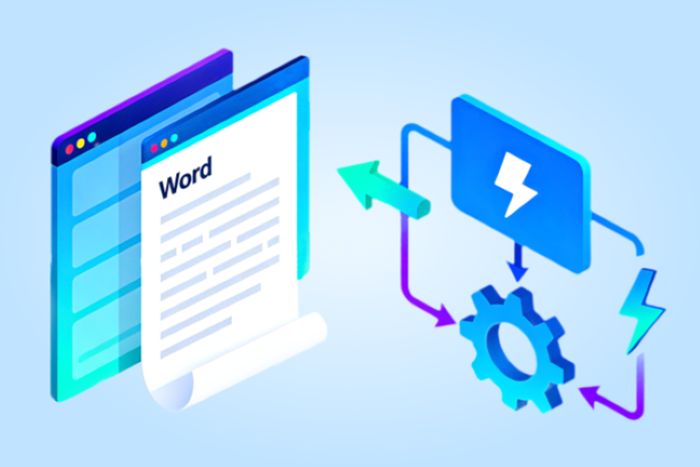Managing Word documents efficiently has become essential for modern businesses, where automation and integration define productivity. Instead of manually creating, editing, or formatting Word files, developers can now rely on Word APIs to automate the entire process—saving time, improving accuracy, and ensuring consistency across systems.
In this article, we’ll explore what makes a great Word API, why document automation is transforming digital workflows, and how developers can integrate these tools to streamline their Word file operations across multiple platforms.
Key Takeaways
- Word APIs automate document management, improving efficiency and reducing human error.
- They allow developers to create, edit, convert, and process Word documents programmatically.
- Key features to consider include format support, document manipulation, and cross-platform compatibility.
- Spire.Doc stands out among Word APIs for its performance, ease of use, and multi-platform support.
- Automating Word workflows is essential for organizations to enhance productivity and maintain accuracy.
Table of Contents
The Need for Word Automation
Word documents are deeply embedded in everyday business operations—contracts, proposals, reports, and compliance documents all rely on them. Yet, manual document handling remains slow, repetitive, and prone to human error.
Organizations that manage large volumes of documents often struggle with tasks like template population, formatting consistency, and mass conversion between formats. Automation solves these challenges by allowing software systems to handle the repetitive work automatically—improving efficiency, reliability, and scalability.
In essence, automating Word workflows turns document management from a manual task into a repeatable, reliable process that integrates seamlessly with other business systems.
What are Word APIs?
A Word API (Application Programming Interface) provides developers with a set of tools to programmatically create, edit, convert, and process Word documents. Instead of manually interacting with Microsoft Word, developers can use code to automate these tasks directly within their applications.
This type of API can:
- Generate new Word files dynamically from templates
- Modify text, styles, and layouts
- Insert tables, images, and charts
- Convert between formats like DOCX, PDF, HTML, or TXT
- Handle bulk operations such as batch report generation or mail merge
By integrating a Word API, developers can build automation into their workflows—empowering systems to produce consistent, branded, and accurate documents at scale.

Key Features of a Reliable Word Automation Library
When evaluating a Word API, several essential features define its quality and usefulness:
- Comprehensive Format Support: Handles DOC, DOCX, RTF, ODT, and HTML with full fidelity.
- Rich Document Manipulation: Provides access to paragraphs, tables, headers, footers, images, and styles.
- Template and Mail Merge Functions: Supports dynamic content replacement and mass document creation.
- Conversion Flexibility: Converts Word documents to PDF, image, or other formats without quality loss.
- Office-Free Operation: Works without Microsoft Office installed, simplifying deployment.
- High Performance and Scalability: Optimized for large-scale, data-driven document automation.
These capabilities ensure that a Word API can meet both enterprise and individual development needs while reducing manual workload.
How Word APIs Improve Workflow Efficiency
The true value of Word automation lies in the efficiency and accuracy it brings to document-heavy processes. Instead of managing files individually, businesses can automate entire workflows—from data input to document delivery.
For example:
- Invoicing Systems: Automatically generate invoices from a database and export them to PDF for distribution.
- Legal and Compliance Departments: Populate contracts with client-specific details while maintaining consistent formatting.
- Human Resources: Generate employee letters, reports, or forms dynamically from templates.
- Education and Research: Automate certificate generation, course reports, or data-driven summaries.
By integrating document generation into existing applications, organizations can drastically reduce turnaround times and minimize the risk of human error.
Cross-Platform Document Automation
One of the emerging trends in modern development is cross-platform compatibility. Businesses often operate across multiple environments—Windows, Linux, macOS, and even mobile systems. Therefore, a Word API that supports multiple programming languages and frameworks becomes invaluable.
A versatile library such as Spire.Doc addresses this need by offering dedicated versions for .NET, Java, Python, C++, and Android. This allows developers to automate Word document processing within whichever ecosystem they use—be it a web service written in Java, a desktop solution built on .NET, or a Python-based data automation workflow.
This cross-platform capability ensures that automation solutions remain consistent across environments, reducing development overhead and simplifying long-term maintenance.
Use Cases in Modern Applications
Word APIs are increasingly used across industries to simplify and accelerate document handling. Here are several real-world examples:
- Enterprise Reporting: Automatically generate detailed business reports based on live data.
- Customer Communication: Create personalized letters, proposals, or offers for individual clients.
- Digital Archiving: Convert and store Word documents as searchable PDFs or HTML files.
- Workflow Integration: Embed Word document generation directly into CRM, ERP, or HR systems.
- Bulk Processing: Apply formatting or content updates across thousands of documents simultaneously.
These applications demonstrate that document automation isn’t limited to technical use cases—it plays a crucial role in every sector that relies on consistent, data-driven document output.
Comparing Word APIs: What to Look For
Selecting the right Word API involves evaluating a few critical aspects beyond features alone. Here are key factors to consider:
- Ease of Integration: How straightforward is it to embed the API into your existing application?
- Performance Benchmarks: Does it process large documents quickly and efficiently?
- Documentation and Support: Are there resources available to assist with implementation and troubleshooting?
- Cost Efficiency: Does the library provide flexible licensing for different use cases?
- Platform Coverage: Can the same library work across multiple languages and systems?
Developers and organizations benefit most from APIs that balance power with simplicity—allowing fast deployment without compromising flexibility.
Why Developers Prefer Spire.Doc
Among the available Word APIs, Spire.Doc has become a preferred choice for many developers due to its blend of performance, ease of use, and multi-platform support. It provides everything needed for end-to-end document automation, from creation and editing to conversion and batch processing.
One of its defining advantages is its cross-platform design, offering versions for .NET, Java, C++, Python, and more. This versatility enables teams to maintain consistent workflows across technologies, without rewriting automation logic for different platforms.
Furthermore, the API’s intuitive structure allows developers to perform complex document tasks through simple, readable commands—making it suitable for both small-scale integrations and enterprise-grade automation.
By leveraging such a capable tool, developers can focus on building business logic and user experience while leaving document management to the system—fast, accurate, and fully automated.
Final Thoughts
Document automation is no longer a luxury; it’s a necessity in the digital age. For organizations that handle a high volume of Word files, manual document generation and editing can slow down operations, reduce accuracy, and limit scalability.
Reliable Word APIs empower developers to transform static document workflows into automated, intelligent processes that adapt to business needs. Whether it’s generating reports, merging templates, or handling tasks related to file data transformation, the right library saves countless hours and ensures professional-quality output every time.
Solutions like Spire.Doc showcase how far Word automation has evolved. With support for multiple platforms and languages, it allows development teams to build flexible, high-performance document systems that operate efficiently across environments.
As digital transformation continues, the ability to automate Word document workflows will remain essential to achieving agility, consistency, and efficiency in every organization.











